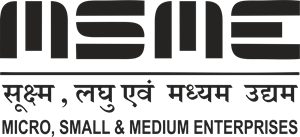Miniaturisation is a need in today’s fast-growing world. And when we talk about small devices, the first technical word that pops up in our head is embedded systems. Embedded systems are growing more competent and intelligent across embedded domains.
With the current advancements in the field of electronics, especially wireless comm technologies, SOCs, microcontrollers, and widespread IoT transformation and cognitive computing, it’s evident that the number of embedded systems is increasing and will not stop.
The trend spans the embedded landscape, including automotive, industrial automation, semiconductor, consumer electronics, avionics, energy, and healthcare domains.
In just a few years, we will be surrounded by these small devices, and our lives will change drastically.
Having talked much about the embedded systems enormity, let us now define what an embedded systems is. An embedded systems is computer hardware based on microprocessors with limited performance.
Unlike a classic desktop, such computers run software that performs dedicated functionalities. Embedded systems are either standalone devices or parts of large systems.
Across all domains, embedded systems are becoming more sophisticated and intelligent.
The automotive, industrial automation, semiconductor, consumer electronics, avionics, energy, and healthcare industries are just a few embedded industries affected by the trend.
We cannot disregard one crucial aspect promoting these developments while discussing the tremendous rise of embedded systems: Embedded Apps.
Without a doubt, embedded apps are essential to any technological advancement in the present day because of their cutting-edge functionality as well as their intuitive and user-friendly design.
Embedded System and its Components
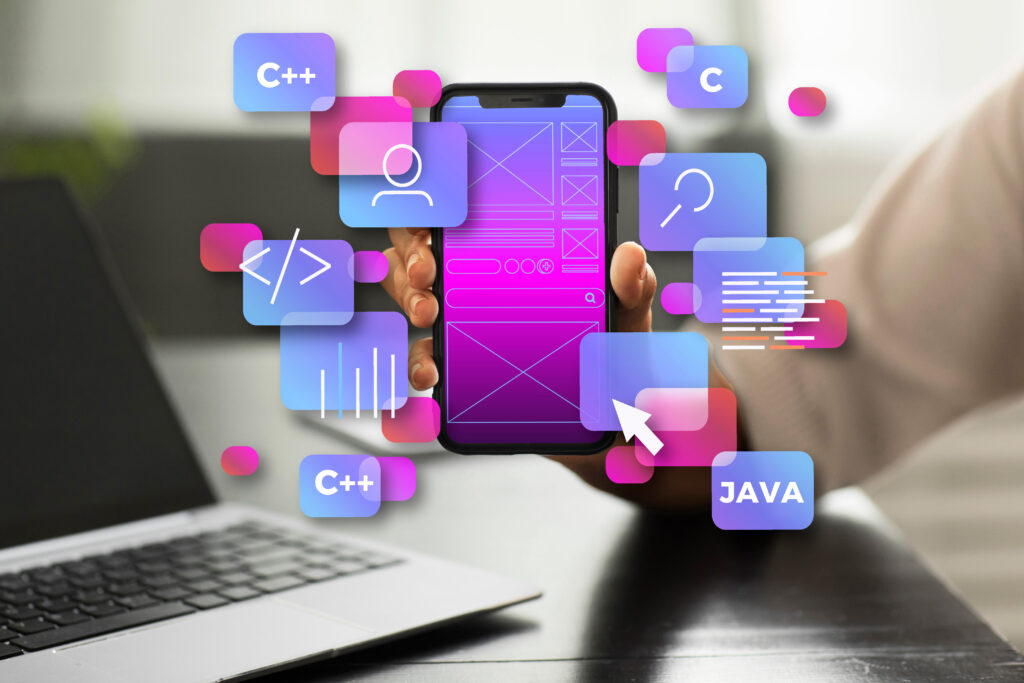
An embedded system is a specially designed computer intended to serve a single purpose. It is a system that combines software and hardware to carry out a specific function.
It can function as a stand-alone system or as a component of a larger system. Numerous products and services, such as consumer electronics, industrial machinery, cars, trucks, processing industrial devices, airplanes, digital watches, vending machines, air conditioners, mobile devices, and much more, use embedded systems.
Components of Embedded Systems
The embedded systems’ hardware is the focus of this section. The software components used for the embedded systems will be covered in the next section.
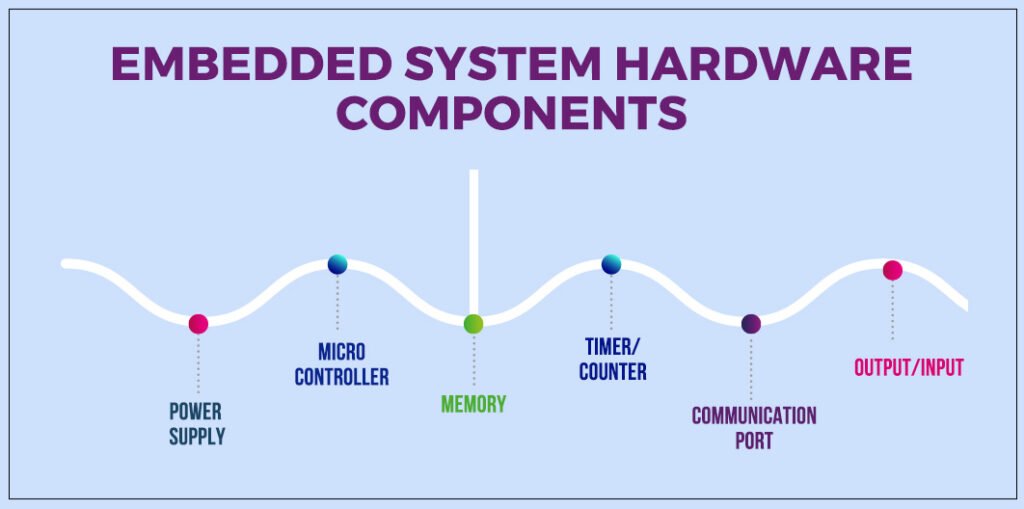
Power Supply
An essential part of the design of an embedded system is a power supply. The primary purpose of this electrical device is to supply power to the electrical load. The system normally needs a 5V power supply, but it can also be between 1.8 and 3.3V. Whichever one you choose will depend on your needs and use case.
A smooth and effective power supply is required for the embedded system to function as intended. A battery or wall adopter can be used as a power source. While some power supplies are integrated into the embedded technology they power, others function as stand-alone pieces of apparatus.
Microcontroller
A microcontroller-based system or a microprocessor-based system is an embedded system. They are referred to as integrated circuits and provide a system with computing power. The processor, often referred to as the embedded system’s brain, is primarily responsible for the performance of the embedded hardware.
Select from a variety of processors, such as 32-, 16-, and 8-bit models. Their processing speeds differ from one another. An 8-bit processor, on the other hand, has less processing speed and can only manipulate 8 bits at a time, whereas a 32-bit processor has more processing speed and can manipulate 32 bits at once.
An 8-bit processor would be more than enough for basic applications; more bits are needed for sophisticated and complex ones. Typically, the 8-bit processor runs at 8MHz, whereas the 32-bit processor can run up to hundreds of MHz.
ROM/RAM
For the embedded computer system to store critical data, memory is necessary. A microcontroller or microprocessor incorporates memory.
RAM (random access memory) and ROM (read-only memory) are the two different forms of memory. The program code is stored in the former, also referred to as code memory, which is non-volatile—that is, it remains in the system even after the power source is disconnected.
The latter is known as data memory, and it is a volatile memory, which means that when the power supply is cut off, the information is temporarily stored there and then erased from the system.
Timers / Counters
There are instances when a delay must be added before a particular function. In these situations, timers are used. Occasionally you would like to count how often a specific event happens. In these situations, counters are employed. The system will count up from the starting value to 0xFF if an up counter is used, and down to 0x00 if a down counter is. Flip-flops and other register-type circuits are used to integrate the counters.
Communication Ports
In order to communicate with other embedded systems, embedded systems use communication ports. Numerous communication ports are available, such as RS-485, USB, I2C, USB, UART, and SPI. The microcontroller has communication ports that are used for basic applications, and these ports are externally installed inside embedded systems for more sophisticated and complex applications.
Output And Input
To communicate with the embedded system, input is needed. The system may receive input from a sensor. It is possible to set up the microcontroller in the system as an input or output port. There are a set number of input and output ports on the microcontroller that you can use in accordance with your needs.
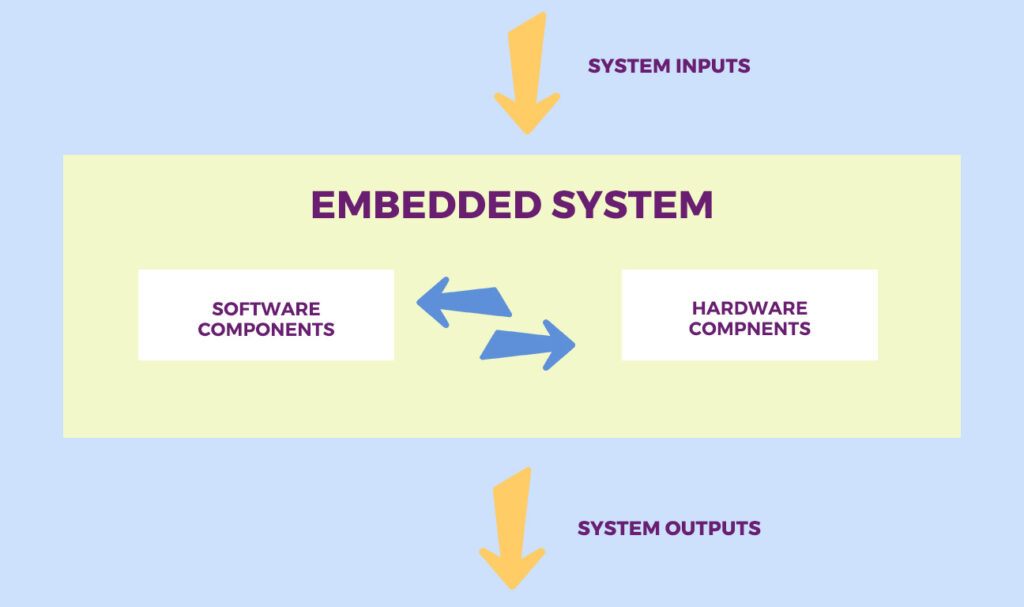
Stages of the application development for embedded systems
There are a few stages in developing the application development for Embedded systems.
- Ideation/purpose of the product
- Technical specification
- Architecting the Solution
- Component section & design finalization
- Test Plan
- Design implementation
- PoC / Prototype Development
- Field Trials
- Final Product Improvements
- Product Release
Ideation
All stakeholders review an idea at this stage to determine whether it should move on to the software development stage.
Market data is gathered via web research and interviews with possible clients, prospects, and other market participants to support two crucial points.
- Issues that the product will fit. Every element of the consequences might be divided into necessities, nice-to-haves, and luxuries. The more urgent requirements you can address, the better the market’s reaction to your offering will be.
- Cost the consumer would be prepared to pay to have the issue resolved. As a general guideline, at a volume of 1,000 units, the cost of making and selling the product should equal 50% of the actual price charged to the client. The cost will decrease as the volume increases.
Detailed Technical Specification
It is necessary to construct a thorough technical design requirement specification document. The product specification should include the essentials, such as the product’s function, block diagram, key features, environmental considerations, production specifications, etc.
Architecting the Solution
It’s time to architect the solution when a thorough technical specification document has been completed.
On a broad scale, decisions need to be made about how the design will look, what approaches is to be taken to develop a solution, the type of power supply to be used, whether the connectivity would be wired or wireless, how the firmware design will look, and the design of the mobile app, PC software, and cloud-based applications.
The next phase in the hardware design process involves choosing the suitable component for each block or element in the circuit based on numerous crucial factors, including quality, size, features, cost, and lead time. EOL is made possible by hardware design.
Component Selection & Design Finalization
Once the architecture is complete, engineers must examine each system component, choose the appropriate parts, and complete the design (application circuit).
An engineer will make decisions at this stage on, for instance, the type of power supply that should be designed, such as using a linear regulator, a DC-DC switching converter, or something else, as well as the power chip that should be utilized and its application circuit.
Creating a Test Plan
Testing hardware and software are crucial to determining whether a product is reliable. Customers spend money on functional goods but become upset when such goods fall short of their expectations or malfunction in use.
Businesses invest much time in testing their products to ensure that customers have no problems. Watch this video to see how a mobile device’s dependability is tested over several days and hours.
It would be best if you created a thorough testing strategy for any embedded product, which should include the following:
- Hardware design validation
- Software design validation
- Production-level product testing
Before a design is implemented, a test plan is created to help integrate any changes that may be necessary to permit testing.
Design Implementation: Hardware, Firmware, software, Enclosure Design
This is the implementation’s core engineering stage. In this case, the design transformation from the architecture is completed. PCB layout, schematic capture, and MCU firmware are all completed in this step. Work on enclosure design is also done at this point.
A suitable review system is implemented to ensure everything is correctly created the first time.
Proof of Concept, Prototype, embedded systems Development & Testing
It is a good idea to build the prototype first to prove the design and check if there are any problems, if the concept is entirely new or if one is unsure of the entire design or a portion of the design.
Gaining initial confidence in the performance of the design can sometimes be accomplished by purchasing widely accessible block-level modules (power supply, MCU, Wireless modules, etc.), connecting them to form a system, creating simple firmware, and testing in a simulated environment.
If a redesign of the design is necessary because of some problems, this could save a significant sum of money, effort, and time that would otherwise be spent.
Once this is established, one can construct the prototype and test it again for functionality and environmental factors.
Field Trials
Engineers may have mentioned that their product performs fine in the lab but has problems when used in the field.
Because field conditions vary, engineers must consider every circumstance their product may encounter to simulate those scenarios and test its performance before releasing it into the field.
The user is also different, in addition to the field circumstances. Engineers must consider how a non-technical person will use their product in the real world.
One illustration is the need for over-voltage and reverse-polarity safety for the power supply input when making connections in the field.
Imagine a layperson reversing the connection or using a high-voltage power supply, which could cause harm to the product.
Many businesses include a power supply with their products and design their mate connectors so they can only connect in one direction.
Final Product Improvements
Field trials must be conducted over several weeks or months before any improvements are made based on user feedback.
To guarantee that a faultless product leaves production, the developer needs to update the test processes they follow during the design validation/production testing stage if problems are discovered during field trials.
Product Launch
In addition to the product itself, various other things need to be in place before the launch, such as:
- Various product certifications are based on their features and the countries where they will be sold.
- Documentation: Product page on the website, Quick introduction video, Datasheet, User guide, Setting up the Support channel, etc.
Benefits of Embedded Application Development
- Software for embedded devices is made for specialized, little-known functions.
- A wide range of possible tasks in the home, industrial, entertainment, communication, automotive, agricultural, and medical sectors provide practical uses.
- The operating system loads more quickly and is smaller.
- Commonly used embedded devices are easy to manage.
- Small in size and capable of varying performance depending on the application. The cost-effectiveness of embedded systems is attributed to their size.
- Any organization’s engineering or research team can be extended through remote support and development.
- The availability of common network topologies and protocols is significantly beneficial if Linux is chosen for embedded software development. It is possible to use the same components throughout the network without worrying about CPU architecture if the embedded hardware is chosen appropriately.
Challenges of Embedded Application Development
- The hardware capabilities are very limited. To operate with minimum power, the system has to be very efficient. This results in low performance and makes it harder to build responsive and user-friendly applications.
- Troubleshooting and data transfer are also a challenge. When designing an embedded systems, only the minimal required subset of network ports or wireless adapters is carefully selected. This makes it hard to transfer data, install apps and debug applications.
- It is also difficult to update and maintain once the system is configured.
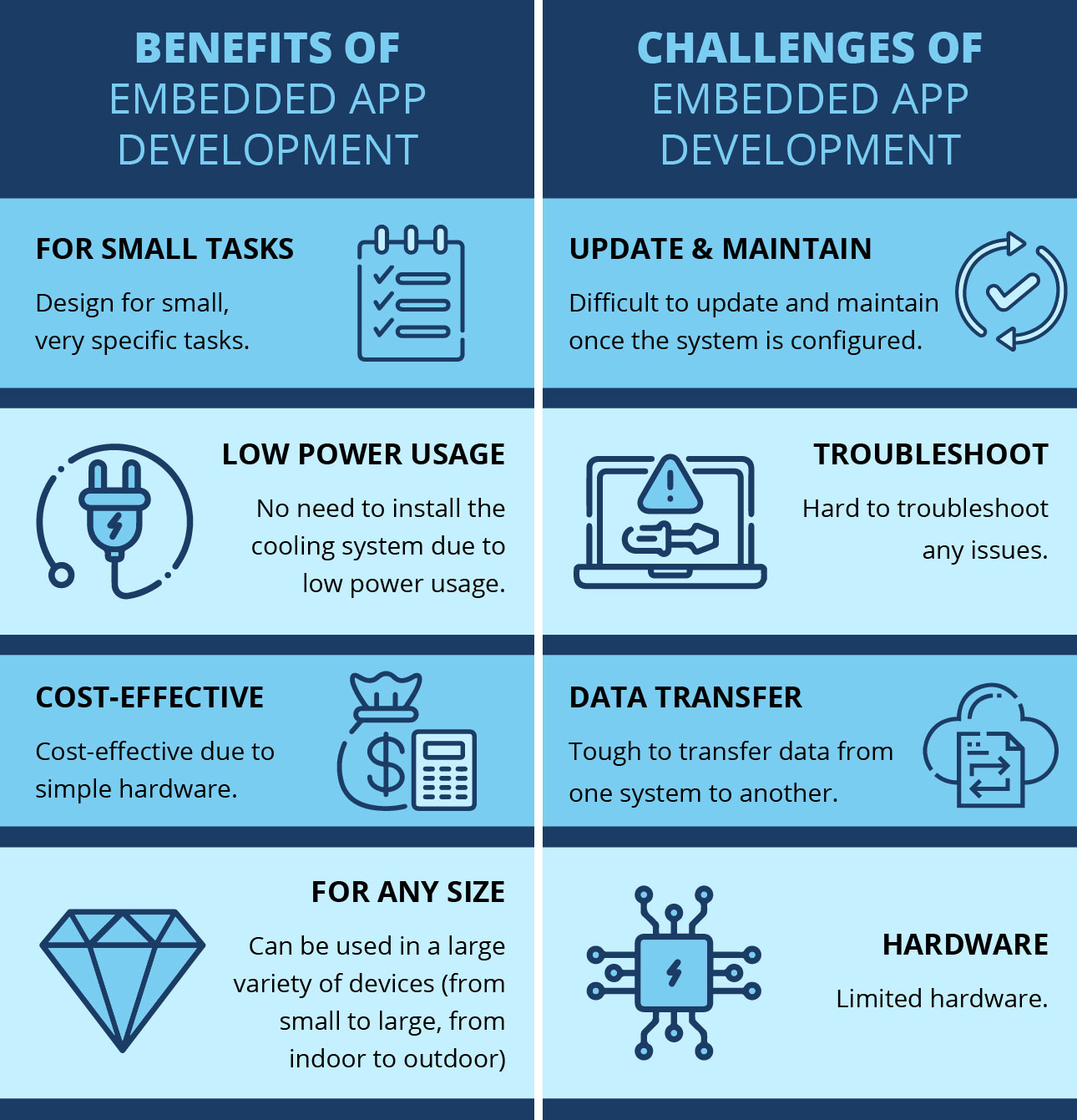
Tools for Embedded Systems software development
Software development for embedded systems necessitates standard software development tools and specific tools unique to this field.
Teams make use of some of the following tools to manage constrained timelines and numerous iterations:
- Version Control Software (VCS) – To keep track of code changes between versions and enable collaboration amongst several developers on a single project. Version management is crucial in highly regulated businesses where earlier versions of the software development must be available for audits.
- Compilers- To translate the code into a machine-understandable form known as machine language.
- An Automation Tool- To use a CI/CD method to automate the steps involved in building, testing, and deploying software.
- Static Code Analysis tool- To find bugs, weaknesses, and compliance problems as code is written. Static code analysis can also increase developer productivity and code quality.
- Hardware Simulators- cycle-accurate simulations of the underlying hardware platforms are done by hardware simulators from suppliers like Synopsys or Cadence. Behavioral models of the hardware or platforms that emulate hardware are frequently also used.
Programming Languages for Embedded Systems

The process of creating software for embedded systems is known as embedded systems programming. Programming in this style differs from traditional programming in that it necessitates a thorough comprehension of the hardware the software will be operating on. Programming for embedded systems finds application in everything from industrial automation to consumer electronics.
C
C is the most popular programming language for embedded systems. It’s a simple language designed to be efficient and fast. Software for microcontrollers, which are tiny computers embedded in a variety of devices, is developed in C. C is a strong programming language that is perfect for embedded systems programming because it enables programmers to write code that is close to the hardware.
The procedural language C offers low-level hardware and memory access. The development of operating systems, embedded systems, and real-time systems frequently uses this language. C is a very portable language that works with many different types of hardware platforms.
C++
Programming at a high level, C++ is utilized in many different contexts, including embedded systems development. Object-oriented programming and templates are two features that C++ adds to the C programming language. Because it is an effective language for writing code, C++ is a popular choice for embedded systems programming.
Writing complex software is made easier by the high-level abstractions offered by the C++ language. This programming language is extensively employed in the creation of embedded systems, operating systems, and video games. One of the most portable programming languages available is C++, which works with a variety of hardware platforms.
Assembly Language
Low-level programming languages like assembly language are used to create software for microcontrollers. Writing code tailored to a piece of hardware requires the use of assembly language. With the help of assembly language, developers can write extremely fast and efficient code.
Low-level access to memory and hardware is possible with assembly language. The development of operating systems, embedded systems, and real-time systems frequently uses this language. A language that is extremely specific to the hardware platform it is operating on is assembly language.
Python
High-level programming languages like Python are used in many different contexts, including embedded systems programming. Python is a widely used programming language for embedded systems due to its ease of use and learning curve. Python is a strong language that enables programmers to create quick and effective code.
Writing complex software is made easier by the high-level abstractions that Python offers. This language is widely used in embedded systems development, scientific computing, and web application development. Python is a very portable language that works with many different types of hardware.
Java
High-level programming languages like Java are used in many different contexts, including embedded systems programming. Java is a popular language for embedded systems programming because it is strong and enables programmers to write quick and effective code. Additionally portable, Java can operate on a variety of hardware platforms.
Writing complex software is made easier by the high-level abstractions offered by the Java programming language. The development of embedded systems, web applications, and enterprise applications all frequently use this language. Java is a very portable language that works with many different types of hardware.
Apps in Embedded systems
IoT and Cloud Application:
Industrial, logistics and supply chains, automotive, medical, intelligent cities, and security, among other vital categories, are being disrupted by IoT.
Connected fitness trackers, smart speakers, and building automation powered by the Internet of Things are already hot topics in the industry.
When discussing IoT apps, a developer must pay close attention to four essential elements: the IoT device, the data ingestion layer, analytics, and the end-user.
Before being displayed at the user end, the data produced by IoT devices is transported across a wireless or wired interface, analyzed, and analyzed.
The user may monitor, control, research, and generate reports utilizing the data in an easily understandable format using an intuitively designed interface, which we refer to as an IoT App or Cloud App, depending on the use case.
A developer of IoT applications must pay close attention to several crucial aspects, including cross-device compatibility, interoperability, cloud integration, connection, scalability, data security, privacy, and numerous standards and regulations.
To create dependable and robust IoT/Cloud Applications, the developer must be proficient in various technologies and methodologies. Several of the tools include:
- IoT Analytics, cloud storage, and web services using AWS/Google or other platforms.
- Communication technologies include Cloud Connectivity, WiFi, WiMax, LTE, 6LowPAN, WirelessHART, ANT, ZigBee, BLE, NFC, and RFID.
- Knowledge of communication protocols such as MQTT, CoAP, XMPP, DDS, STOMP, AMQP, REST, LWM2M, and Websocket.
- Microservices and containerization.
Web/PC Application:
Web/PC apps provide an easy-to-use interface for interacting with embedded systems.
These applications use low-level software code, often written in C, to connect with the embedded device hardware.
To initiate the command, a high-level program and low-level coding send an HTTP request across the website to the hardware.
To build a solid web/PC application, a developer needs to be knowledgeable in the following tools and techniques:
- High-performance, multi-threaded, distributed applications can be created using C, C++, BOOST, RabitMQ, ZMQ, and flat/protocol buffers.
- For optimizing Web pages/services for embedded low latency/footprint, use HTML/CSS/CGI/Python, PHP, and GOLANG.
- For creating Enterprise Web apps, you can use HTML5, CSS 3, Sass, Bootstrap, Foundation, AngularJS, ReactJS, VueJS, NodeJS, Django, Flask, Laravel, and Java.
- IoT analytics, cloud storage, and Google/AWS microservices.
- To create test automation software, use Selenium, RTRT, and gtest/cpptest.
- NoSQL database for time series.
Due to their growing functionality and remote management capabilities, web/PC applications are utilized in real-time distributed systems in the scientific, engineering, medical, industrial, and defense domains.
Using Web/PC applications, complex systems deployed in harsh environments with high temperatures, excessive vibration, dust, etc., can be precisely and accurately monitored and managed.
Industrial Applications
Industrial apps are frequently used to monitor and manage complex systems and processes in various fields, including factory automation, oil and gas, mining, and industrial safety.
Industrial apps are essential to industrial control systems because they give users access to real-time analytics and intelligence, optimize production processes and ultimately boost productivity.
These apps can be used on various devices, such as smartphones, tablets, and industrial PCs.
The explosion of robotics and automated machines in an industrial setting has transformed factory operations by providing remote monitoring, control, computerized diagnostics, and preventative maintenance while assuring the most negligible downtime.
Wearables, Manufacturing Control Systems, Warehouse and Inventory Management, Equipment Maintenance, Production and Workflow Management, Industrial Safety and Security, etc., make extensive use of industrial apps. The following are some tools and techniques for designing industrial apps:
- Java and .NET for implementation of Industrial Apps.
- Microsoft’s SQL Server, PostgreSQL, MySQL, DB/2, etc., for Database management.
- Analytics and Cloud Storage.
Scientific and Medical Application
Even if an embedded device has all the necessary operations and characteristics, as was said at the blog’s beginning, the user interface (UI) determines the user experience.
An intuitive user interface, a seamless user experience, feature-rich UI/UX controls, and an ergonomic design are requirements for every medical or scientific equipment, whether a vast system or a handheld device.
Medical and scientific apps make complex data easier to understand and use while assisting users in swiftly and effectively resolving challenging analytical problems.
Popular implementers of scientific apps include the following:
- QT, UWP, Xamarin, C#, .Net, and Electron for developing PC Apps.
- Report generation – Charts and Plots.
HMI Application
Embedded systems progressively include a large amount of human-machine interface or HMI.
HMI provides a safe and dependable interface for various sophisticated industrial applications, including data gathering, communication, presentation, monitoring, control, and diagnostics.
As the system’s database, HMI is now essential to Automation applications.
Three crucial factors are robust graphical user interface, memory optimization, and power efficiency-are brought up by an HMI development activity.
Designing simple, user-friendly interfaces is becoming increasingly difficult due to diminishing device size and rising functional complexity.
Additionally, the explosion of graphical technologies across embedded systems significantly alters our perspective on HMI as users and designers.
The HMI is a gateway in an embedded systems consisting of hardware modules, I/O devices, controllers, servers, and other components.
For instance, HMIs enable and manage robotics controls in sophisticated equipment in an industrial setting.
Microsoft’s Visual Studio.Net, Qt/QML, Android, ReactNative, etc., are some of the more well-known technologies.
Mobile Application
The industrial, healthcare and automotive industries use embedded mobile apps extensively. They handle sensitive and vital data online. Implementing a safe, impenetrable App platform is essential to prevent data leaks.
There are numerous CPUs and operating systems for mobile devices. As a result, the application produced ought to run without error on any platform.
Some of the popular tools to develop Native Android, iOS apps, and Hybrid mobile Apps include:
- Xamarin, QT for developing Hybrid Mobile Apps.
- Java, Kotlin, NDK, JNI (Android), ReactNative, and Flutter for Android Apps.
- Objective-C, Swift, ReactNative, and Flutter for iOS Applications.
- JustinMind, Adobe Photoshop/XD, Pencil, etc., for wireframes and prototyping.
Bare-metal and Headless Applications
An OS is not required for bare-metal applications, which are firmware programs executed sequentially on the system hardware, often on microprocessors or microcontrollers.
Applications that run on bare metal are quicker, more energy-efficient, and require less memory.
These qualities make bare-metal apps popular for time-sensitive, low-latency applications with strict boot requirements but little need for CPU bandwidth, connectivity, or memory, such as DO-178-compliant programs for safety- and mission-critical systems.
Wearable, medical, home automation, industrial, health, and wellness devices have use cases for headless apps where a user interface is unnecessary to carry out tasks.
Some of the popular tools used for building Bare-metal and Headless Apps include:
- C/C++/Assembly apps on various IDEs for the bare-metal environment.
- FPGA, DSP Algorithms.
Challenges of Embedded Software Development
A more extensive system, such as a digital watch, smartphone, car, or piece of automated industrial equipment, will always include embedded software.
These embedded solutions must work with limited memory, computing power, and energy supply and provide real-time responses in all situations within the time frame required by design.
Additionally, as processors, sensors, and hardware components might change over time, embedded software must resist changes in its working environment.
The requirements of portability and autonomy for embedded product development are additionally complicated.
Stability
Stability is crucially important. Unexpected software engineering behavior is unacceptable and carries significant dangers.
End customers demand that embedded software behave consistently in every situation and be able to function for an extended period without support.
Safety
Due to their principal use being lifesaving capabilities in dangerous circumstances, embedded software has a unique focus on safety.
For embedded software, the Software Development Life Cycle (SDLC) has stricter requirements and constraints on testing, engineering competence, and quality.
Security
In the digital age, security has grown to be a significant concern. The associated risks increase dramatically as IoT devices gain popularity globally and become more networked.
The Internet of Things is currently exposed to a significant danger of hacking assaults because modern home appliances like electric cookers, refrigerators, and washing machines have networking features.
For instance, virus or ransomware protection, financial losses, data theft, intellectual property infringement, and sensitive informal disclosures were among the most urgent security problems of 2020.
Launch Phase
Time-to-market and time-to-revenue challenges in embedded software solutions, mainly in the IoT space.
Platforms and apps will support many IoT devices, which are projected to total 13.8 billion by 2021 and 30 billion by 2025.
Due to the IoT industry’s rapid expansion, manufacturing hardware development components housing the embedded domain requires high integration and flexibility.
Future updates and releases provide challenges for component designers.
Design Limitations
The market forces designers to trade between packing more computing power and longer battery life into smaller places.
Finally, there is a rising market for producing very scalable processor families, ranging from affordable and ultra-low-power to maximum performance and highly programmable CPUs with a forward-compatible instruction set, depending on IoT applications.
The requirement for improved system bus and internal/external memory cache performance is comparable.
Compatibility and Integrity
According to estimates from the Gartner Group, most of the apps available today were released by companies with less than three years of experience.
Even though they may be software development experts, many lack practical knowledge regarding installing and maintaining their applications in the IoT environment, particularly regarding security.
Palo Alto Networks stated that 98 percent of existing IoT device traffic is not secured, posing a potential attack on confidential information and disclosing personal data in its 2020 Unit 42 IoT Threat Report.
The connectivity of IoT devices and their continued expansion puts increasing strain on their adaptability.
Users must be able to manage the app using a straightforward user interface through all accessible channels, including over-the-air firmware updates, which require severe ecosystem compatibility.
Integrity starts to depend on security.
Security must be integrated into every device at every level-the end node, gateway, cloud, etc.-to safeguard the IoT from vicious assaults or compromise.
Conclusion
As previously stated, almost all devices around us contain embedded software development services elements, not to mention mission-critical applications such as various industrial automation equipment, electronic control units and antilock brakes in automobiles or missile guidance systems.
Yes, it also refers to IoT devices rapidly gaining popularity.
The embedded developer is used in almost every industry, to name a few: automotive, aerospace, telecommunications, consumer electronics, banking, office and home appliances, security, and so on.
One of the essential characteristics of embedded software is its increased reliability, accuracy, and performance speed, enabling real-time computing.
Furthermore, they are smaller and consume less power, allowing them to be used in broader applications. Logic Fruit Technologies offers fully integrated services for designing, developing, testing, and validating embedded software development worldwide for our clients. We provide embedded systems development design services for various micro-kernels and RTOS platforms globally that are industry standard.


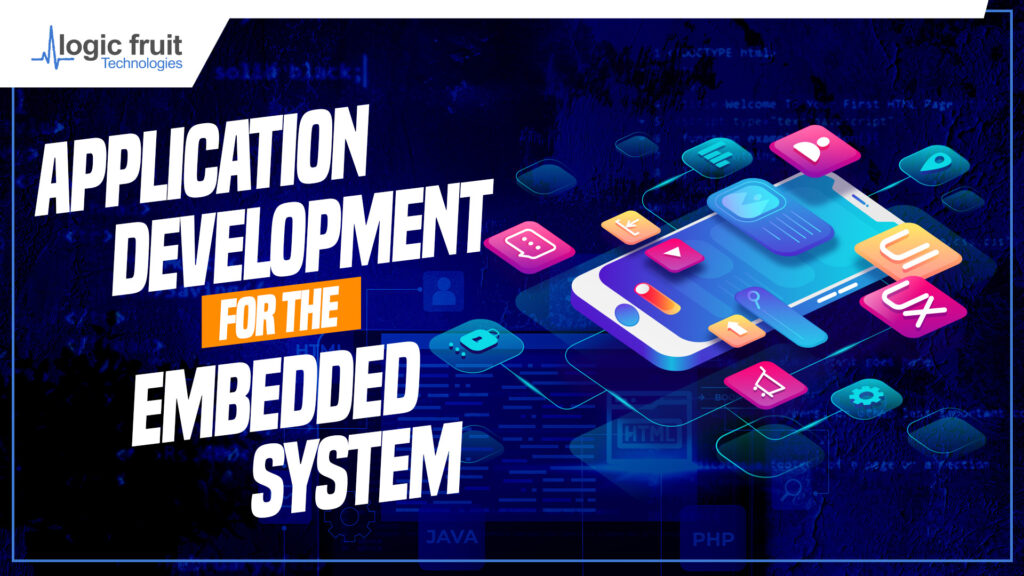
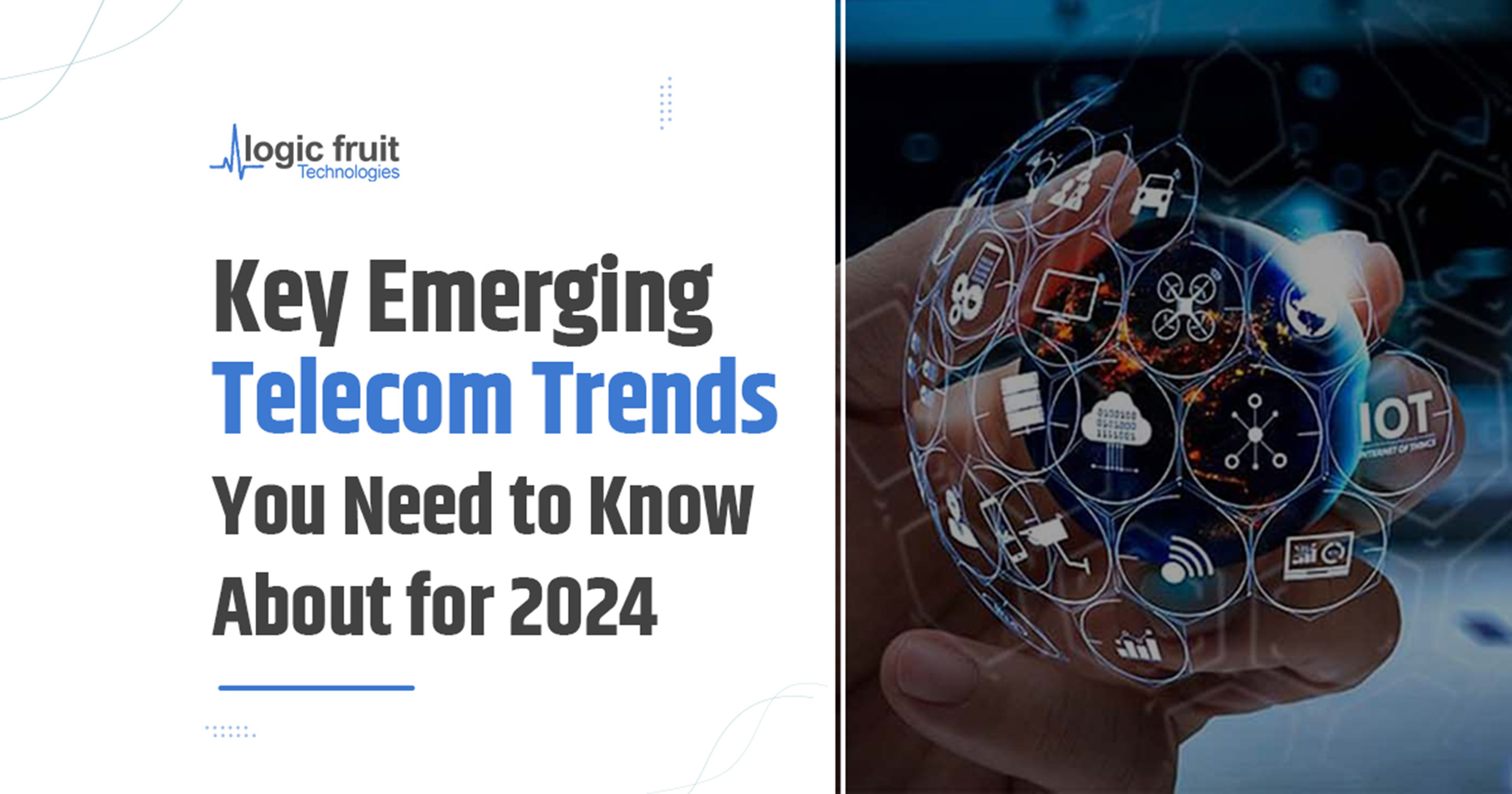

![Advanced Driver Assistance System [ADAS] Everything You Needs to Know](https://www.logic-fruit.com/wp-content/uploads/2022/10/Advanced-driver-assistance-systems-Thumbnail.jpg)




